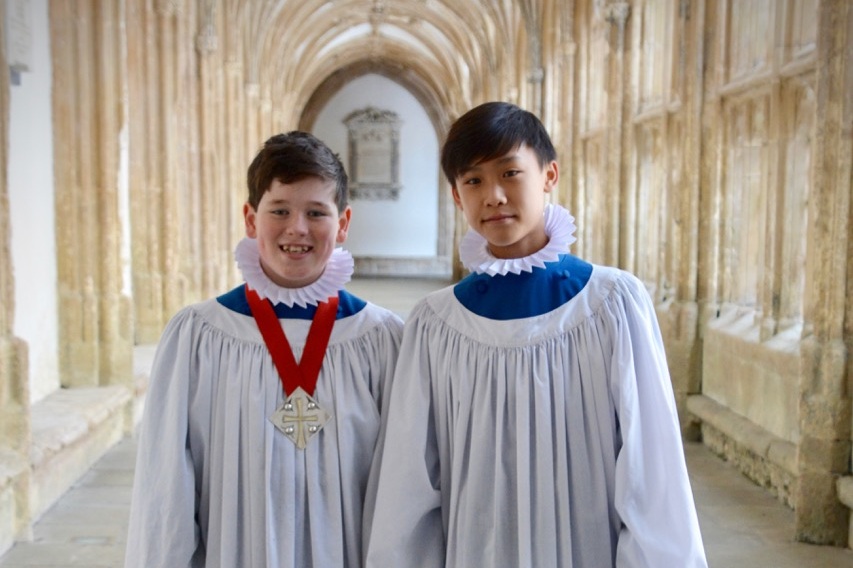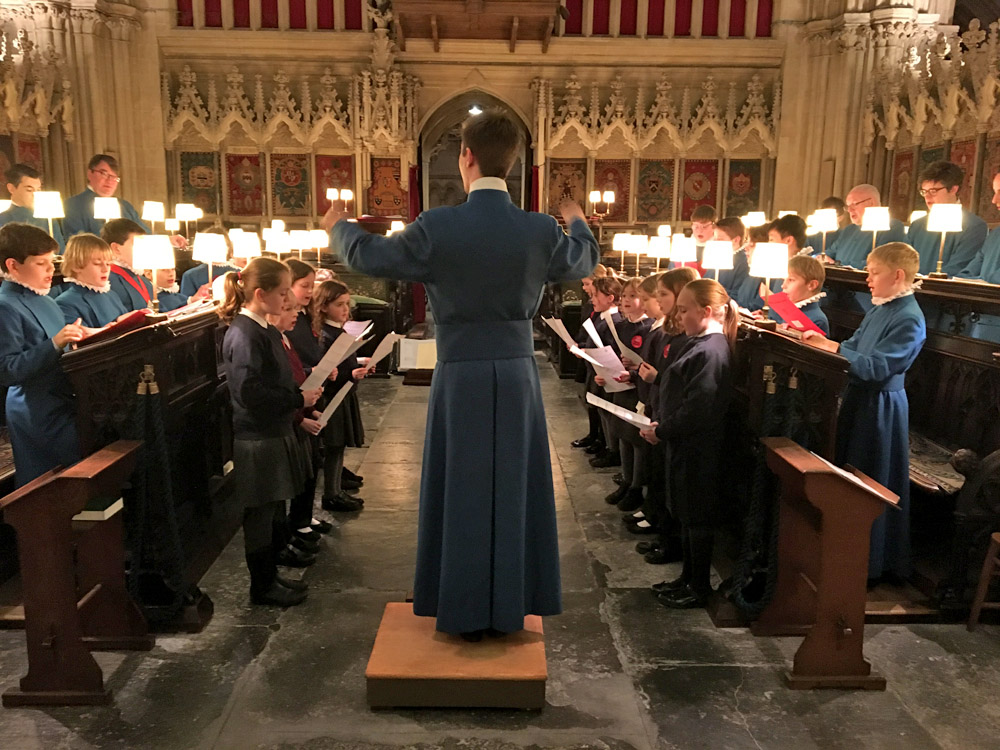On Saturday 2 February, the Feast of Candlemas, the choristers will be performing Benjamin Britten's magical A Ceremony of Carols at a FREE lunchtime concert at 1.05pm. The performance will take place in the beautiful candlelit space of the Lady Chapel in Wells Cathedral and there will be a retiring collection in aid of the Chorister Trust.
British composer Benjamin Britten wrote his cantata, A Ceremony of Carols, during World War II while he was crossing the Atlantic in 1942 aboard a cargo ship. Since then, the choral work has become a staple for choristers across the land during the Christmas season.
The cantata is made up of 11 movements: 10 with voice and one for solo harp. It was written originally for a three-part boys’ choir, with soloist and harp accompaniment. Some of the carols are in Latin; some are in Middle English based on poems from the 15th and 16th centuries.
As the threat of World War II loomed, Britten decided to leave England in 1939 with his personal and professional partner, tenor Peter Pears. They spent time in Canada and the United States before returning to England in 1942. While in the U.S., Britten composed several major works. His decision to go back home was prompted after reading a collection of poems by George Crabbe called The Borough. Published in 1810, this collection was set on the Suffolk coast where Britten was from.
Britten and Pears boarded the Swedish cargo ship Axel Johnson in March 1942 to return to England. The voyage was dangerous with Nazi submarines inhabiting the Atlantic but the composer completed two choral works during the crossing: Hymn to St. Cecilia and A Ceremony of Carols.
The musical sequence begins with the plainchant “Hodie Christus natus est,” sung in unison and unaccompanied as a processional. That is followed by several poems from the Middle Ages that Britten chose to tell the Christmas story: from the jubilant exultations of “Wolcume Yule”, to the pastoral solos of “That yongë child” and “Balulalow,” and the to the martial urgency of “This Little Babe's” expanding canon - whose vivid "holy war" between the infant and Satan must surely have been inspired by the real-life world war. Halfway through the cantata, the harp solo “Interlude” not only unifies the entire work by including themes from various movements but also displays the versatility of the harp. After the harp solo, the choir continues with the chilling “In freezing winter night,” the lighthearted “Spring Carol,” and the joyful “Deo Gracias.”
























